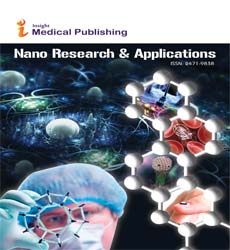Nanosensors in the Service of the Internet of Things (Iot)
Sumant Kumar Pandey
Abstract
â??Nanoâ?ÂÂ refers to objects measured in nanometers, or billionths of a meter. To put that in perspective, a sheet of paper is about 100,000 nm thick and a strand of blonde hair measures around 30,000 nm. At this scale, surface area has a bigger effect on material behaviour than it does for bigger objects. Consequently, properties like reflectivity, conductivity and magnetism change when compared to larger bodies. So now the world is looking towards the nano dimension to revolutionize the Size and Architecture of Iot Network. With the increasingly more nano-sensors coming to picture, most of which are passive and work when a continuous stream of radiation is shed. Scientists have started shrinking sensors from millimetres or microns in size to the nanometre scale, small enough to circulate within living bodies and to mix directly into construction materials. This is a crucial first step toward an Internet of Nano Things (IoNT) that could take medicine, energy efficiency and many other sectors to a whole new dimension. Conventional device technologies usually employ top-down fabrication methodologies for high volume manufacturing. However, as we enter the nano-scale regime and the Internet of Things (IoT) era, there are many challenges faced by the conventional top down approaches owing to the variability&reliability issues. Some of these issues with respect to the conventional technologies can be better addressed by employing a host of bottom up approaches through innovative process integration strategies. Further, there is also a need for an intelligent integration of diverse technologies, materials and processes on the same die or in a package for realization of future smart systems for the IoT Era. When it arrives, the IoNT could provide much more detailed, inexpensive, and up-to-date pictures of our cities, homes, factoriesâ??even our bodies. Today traffic lights, wearables or surveillance cameras are getting connected to the Internet. Next up: billions of nanosensors harvesting huge amounts of real-time information and beaming it up to the cloud.
Open Access Journals
- Aquaculture & Veterinary Science
- Chemistry & Chemical Sciences
- Clinical Sciences
- Engineering
- General Science
- Genetics & Molecular Biology
- Health Care & Nursing
- Immunology & Microbiology
- Materials Science
- Mathematics & Physics
- Medical Sciences
- Neurology & Psychiatry
- Oncology & Cancer Science
- Pharmaceutical Sciences
